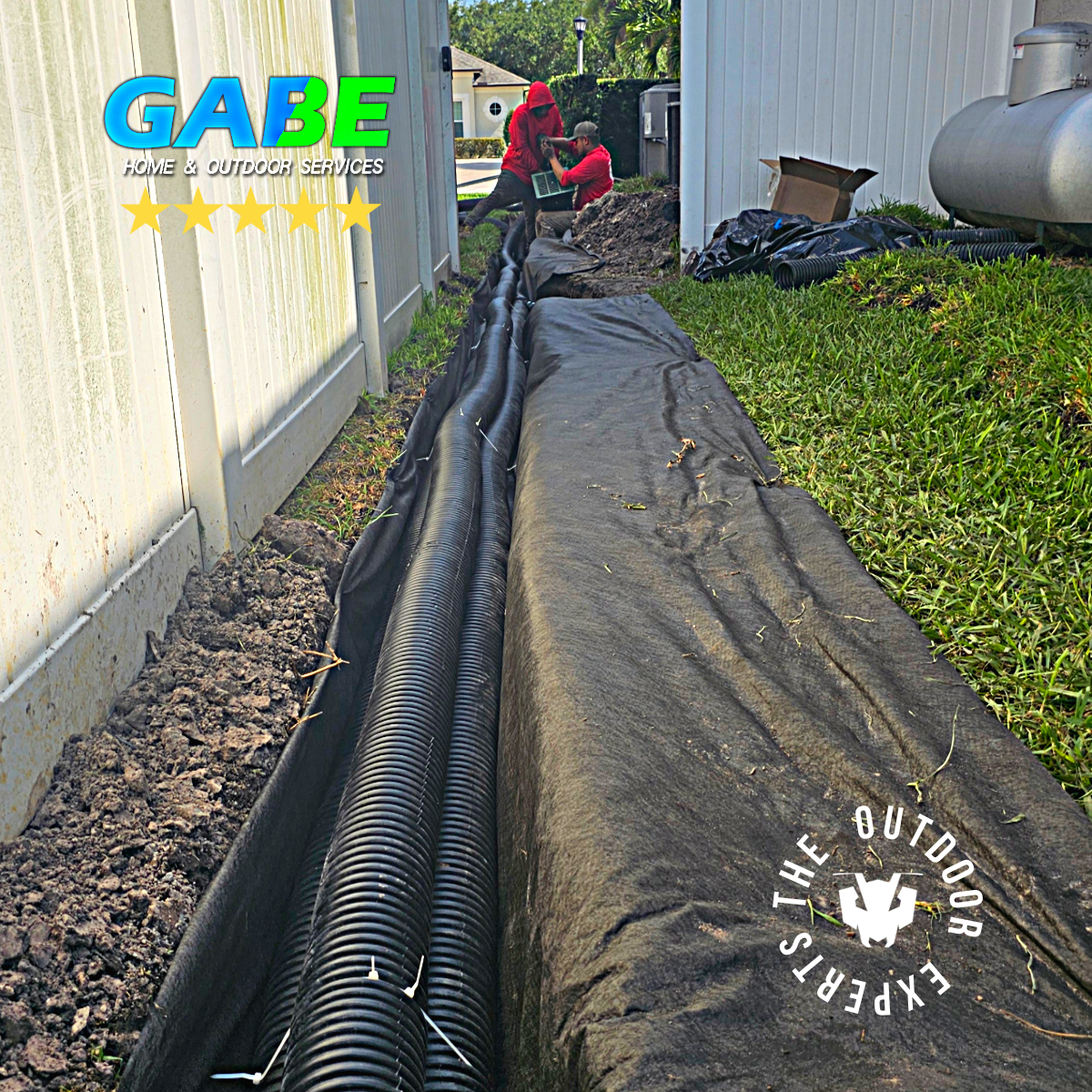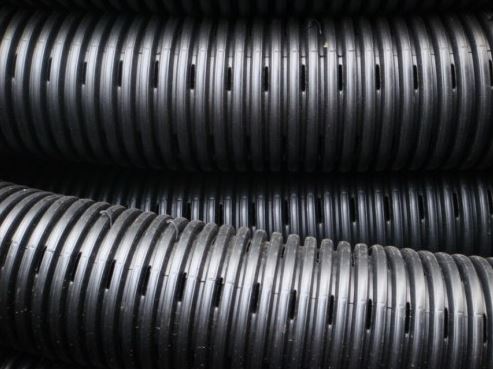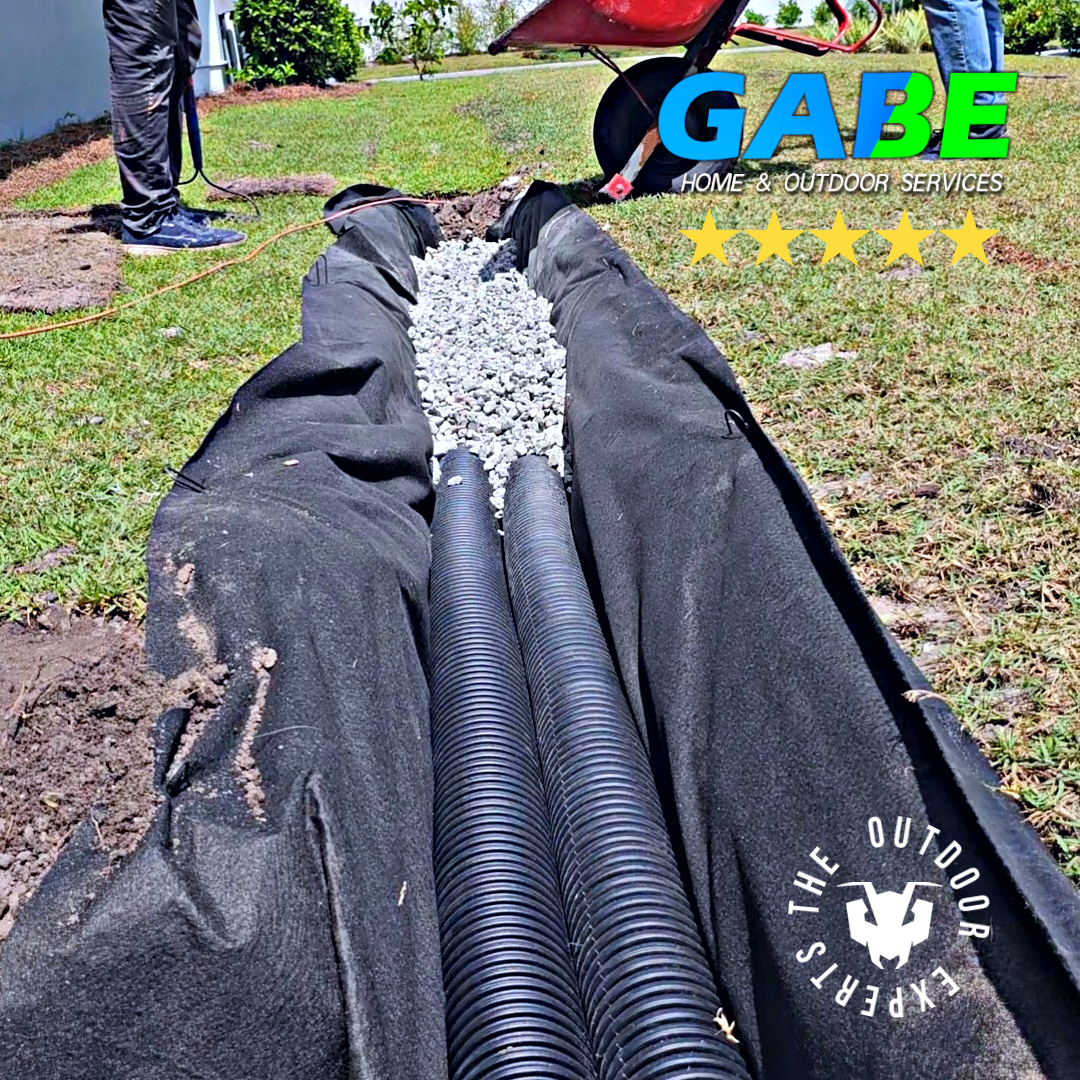
WHAT IS A FRENCH DRAIN? AND HOW CAN IT SOLVE YOUR YARD’S WATER PROBLEMS?
Everything You Need to Know About French Drainage Systems
If you’re dealing with soggy yards, flooded landscapes, or constant plant damage, you’ve probably heard of drainage systems like French Drains. But here’s the thing: not all drainage systems are created equal. While some contractors might simply connect a downspout to a pipe and call it a “French Drain,” the true French Drain system is much more sophisticated and effective in addressing subsurface water issues.
So, why should you care about this? Let’s dive into what makes French Drainage unique, how it works, and why it’s the ultimate solution for high water tables and poor drainage in Winter Garden, FL.
WHAT EXACTLY IS A FRENCH DRAIN?
A French Drain is a carefully designed trench drainage system that uses a combination of perforated pipe and gravel or aggregate to manage water beneath the soil’s surface. Unlike surface drainage systems that handle only runoff water, a French Drain addresses subsurface water—the kind of water that’s soaked into the ground, often due to a high water table or heavy soil saturation.
Here’s what sets it apart from typical drainage methods:
It Targets Subsurface Water
Traditional surface drains only redirect water that sits on top of the ground, whereas French Drains work by draining water beneath the surface. If your yard becomes waterlogged, or if you have a high water table causing persistent moisture in the soil, a French Drain is designed to target and relieve that issue. This is especially important because when the water table is too high, water can infiltrate into your home, causing serious problems like flooding in your basement or water seeping into walls. A high water table can also weaken the soil around your foundation, leading to settling, cracks, or even flooding of your basement, posing risks to the structural integrity of your home.It Uses Perforated Pipe for Efficient Drainage
The key component of a French Drain is the perforated pipe that’s placed in the trench. The perforations allow water to seep through, while the pipe directs it away from problem areas—such as your yard, foundation, or garden. This pipe ensures that excess water is continuously drained away from the area, preventing waterlogging and potential foundation damage.It’s Not Just a Pipe and Gravel
A true French Drain isn’t just about putting in a pipe and covering it with gravel. The pipe is surrounded by a special filter fabric to keep out soil and debris, ensuring that the water can flow freely without the risk of the pipe getting clogged. Additionally, the trench is filled with gravel or other aggregates that act as a filtration layer, guiding water to the pipe without blocking it.

Why Choose French Drainage?
A French Drain is not just a simple “pipe in the ground.” It’s a comprehensive solution that targets the root cause of water saturation and pooling in your yard. Here’s why it’s the best option:
Tackles Subsurface Water Issues:
If your soil becomes oversaturated, or if your water table is too high, the moisture can linger in the soil, causing problems for your lawn, garden, and foundation. French Drains are designed to address these subsurface issues directly.Protects Your Home and Landscape:
Excess moisture near your home’s foundation can lead to cracking, shifting, or water damage. By redirecting water away from the foundation, a French Drain can prevent these costly and serious issues.Prevents Plant Health Problems:
Constantly soggy soil can suffocate plant roots, cause root rot, and promote disease. French Drains remove excess moisture, providing plants with healthier growing conditions.Long-Term Solution:
Unlike surface-level drainage systems that may require frequent maintenance or cleaning, a properly installed French Drain is a long-lasting solution that can keep your yard dry and healthy for years to come.
When Do You Need a French Drain?
You should consider a French Drain if you’re experiencing:
- Soggy or waterlogged lawn that doesn’t dry out quickly and stays for days
- Flooding around your foundation after heavy rainfall, or if you experienced water filtration trought floor or walls
- Persistent water damage to landscaping, plants, or structures
If any of these issues sound familiar, then it’s time to explore the benefits of French Drainage.
Why You Need Experts for French Drain Installation
French Drain systems require precision and expertise in installation. While it may seem like a straightforward process, improper installation can lead to drainage failure or clogging. That’s why it’s essential to work with professionals who understand the nuances of soil conditions, trenching, and proper pipe installation.
At Gabe Home & Outdoor Services, we specialize in designing and installing French Drainage Systems for homeowners in Winter Garden, FL. Our expert team uses only the highest-quality materials and advanced techniques to ensure your drainage system works as intended.
Ready to Solve Your Water Problems with French Drainage?
Say goodbye to soggy yards and the headaches caused by poor drainage. French Drainage offers a reliable and efficient way to redirect subsurface water, protecting your home and landscaping.
Contact Gabe Home & Outdoor Services today for a consultation, and let us help you protect your property with a custom French Drain system.

How Does a French Drain Work?
Here’s a breakdown of the mechanics that make the French Drain so effective:
Trenching and Pipe Installation:
The first step is to dig a trench in the affected area, usually at a slope of about 1-2%. This slight incline ensures that gravity helps direct water away from the problem area. The trench must be deep enough to reach the water-saturated area while allowing the system to work effectively.Install Filter Fabric:
After the trench is dug, a special filter fabric is installed. This fabric is essential in preventing soil, debris, and silt from infiltrating the drainage system, which can cause clogs over time. The fabric is left with extra hanging at both ends of the trench for easy closure.Pipe and Gravel Installation:
Next, a perforated pipe is laid along the bottom of the trench. The perforations on the pipe allow water to seep into the pipe from the surrounding soil. The pipe is then covered with gravel or other aggregate material, which acts as a filter to guide water toward the pipe without obstructing it.Wrapping the Fabric:
After the pipe and gravel are in place, the filter fabric is pulled over the top, wrapping all the way around the gravel and pipe like a “burrito.” This method ensures that the gravel is completely surrounded, keeping soil and debris out, while still allowing water to flow into the system.Final Covering:
Finally, the trench is filled with additional gravel, soil, or sod to finish the installation. Alternatively, in some cases, an open French Drain with just stones can be left exposed for a more decorative and functional solution. The system is now complete and will provide long-term drainage relief.

